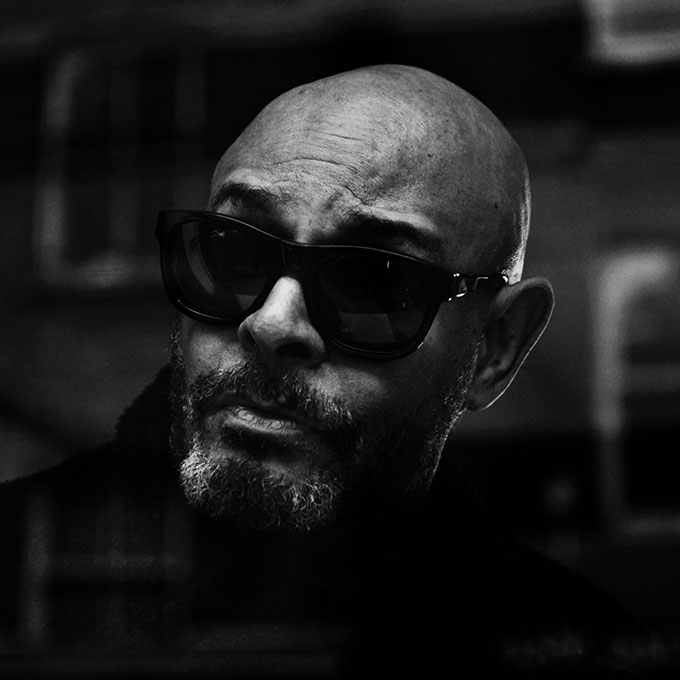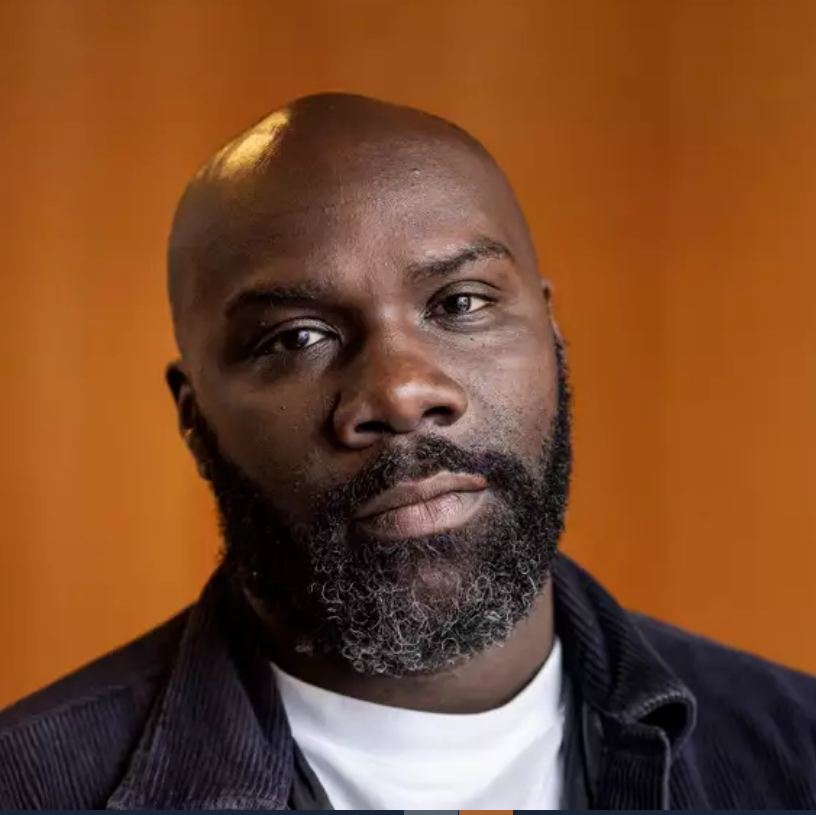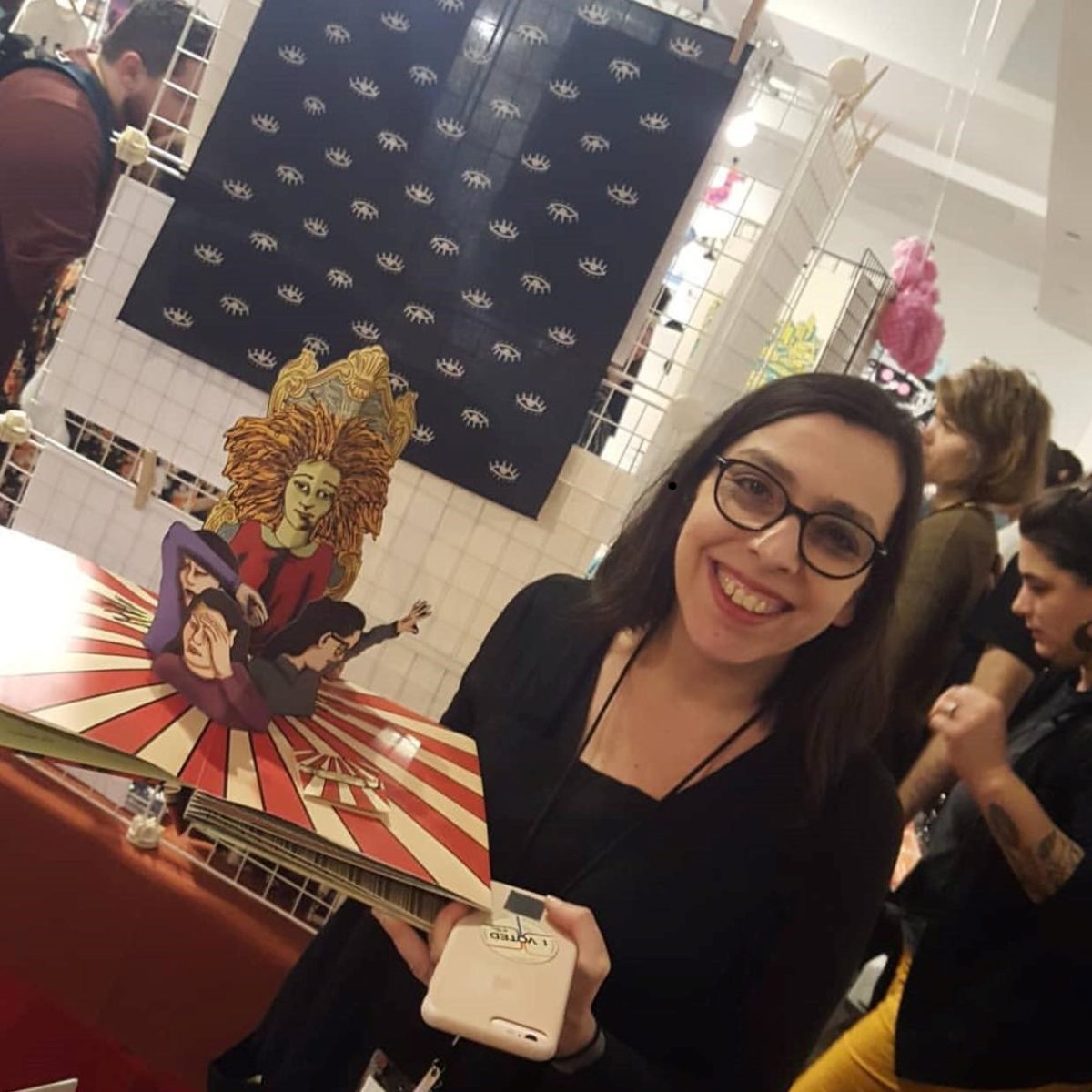
Barry Adamson was born and bred in Manchester's Moss Side, born on 11 June, 1958. A bona fide outsider from day one, he sought refuge in comic books and costume. “I would often be seen age six or so, pedalling my bike; lolly stick in the spokes of the wheels to make the sound of an engine, dressed as Batman. Other times I would walk around as a 'Beatle', complete with black plastic wig”, Adamson muses.
His schooldays confirmed to him that he should absorb himself further into ideas of music, art and film. At the age of ten he wrote his first song, whilst in the following years Adamson would skip lessons and wait at home for the postman to deliver the latest Alice Cooper import from America. Home life was coated with the rhythms of Motown and Jazz. Roxy Music and David Bowie shaped his teenage years.
Adamson left school and shifted into graphic design. This was however short lived, and a life destined for the architect’s drawing board was thwarted when Punk Rock exploded in the late 1970’s which saw him pick up and learn the bass guitar overnight, so he was fit to audition for Howard Devoto’s Magazine. “The world was yours, and music was one big open door that screamed, COME ON!,” enthuses Adamson. Magazine went on to record five albums and tour the world with discernible repute.
Adamson researched the life of his imagination further in the 80’s by moving to London and hooking up with the now legendary Nick Cave and the Bad Seeds. “Let’s call this my black and blue period. The music, like me, was dark and unsettling!” he jokes. Adamson stuck around for three albums. All the while he was getting a taste for other instruments and a different kind of song structure, and like in his Magazine days, he was learning to put his ideas together for a new kind of album…
He began making a series of sketches and tunes that would become the trace elements of his erotic, paranoid style; densely portrayed in his debut solo album, Moss Side Story. This slice of Northern noir would set of an itch for film music that couldn’t be scratched. Moss Side Story became the calling card that film directors took note of, and shortly after it’s release, Derek Jarman offered him a scene in his movie, ‘The Last of England’. More offers followed and Mr Adamson began to develop a reputation as ‘a man who would show up and get it sorted’ – he then went on to score movies for David Lynch, Danny Boyle, Alison Anders, as well as music composition for TV and theatre. He immersed himself in the life of a composer, and turns to the recorded format now whenever it suits him to carry on the legacy of self penned noir classics like the Mercury Nominated Soul Murder, The Negro Inside Me, As Above So Below and The King of Nothing Hill, all for Mute Records. He even found time to attend the New York Film Academy.
After some deliberation, scores for a couple of movies and a ballet, Barry went back to the studio in 2005 to record a new album, Stranger on the Sofa which was finally unveiled to an accepting public in 2006 on his very own Central Control International label. A more commercial sound developed from Adamson as he began to draw on every influence and every album released so far and toured more than ever. The result of which meaning that the album, Back to the Cat – released in 2008 – was lauded by many quarters to be his finest album yet; coming full circle by embracing the pop and Motown of his youth, whilst mixing it thoroughly with his well established, gritty northern film noir style back from as early as Moss Side Story, by this point exactly 20 years old. Barry again took to the road with his band in support of the release, taking in headline tours of the UK, Europe and Australia.
A rejuvenated Magazine took to the stage to high praise in 2009. During rare downtime Adamson flew to Italy to accept the Best Short Story Award at the Piemonte Noir Italian festival for his novella, ‘Maida Hell’, whilst 2010 saw the continuation of Adamson as a multi-platform story-teller with the production of his debut short-film, the noirish thriller, Therapist (released 2011 on DVD). Another album I Will Set You Free, was followed by the opportunity to work with filmmaker Carol Morley, on her investigation documentary, Dreams of a life. By now and to this day, Adamson continues to live and breath in the mainstream of the arts by continuing to score films, make albums, release photo albums and generally involve himself with the most interesting forms of communication around. 2021 will see the release of his first memoir, Up Above The City, Down Beneath the Stars by Omnibus press.





